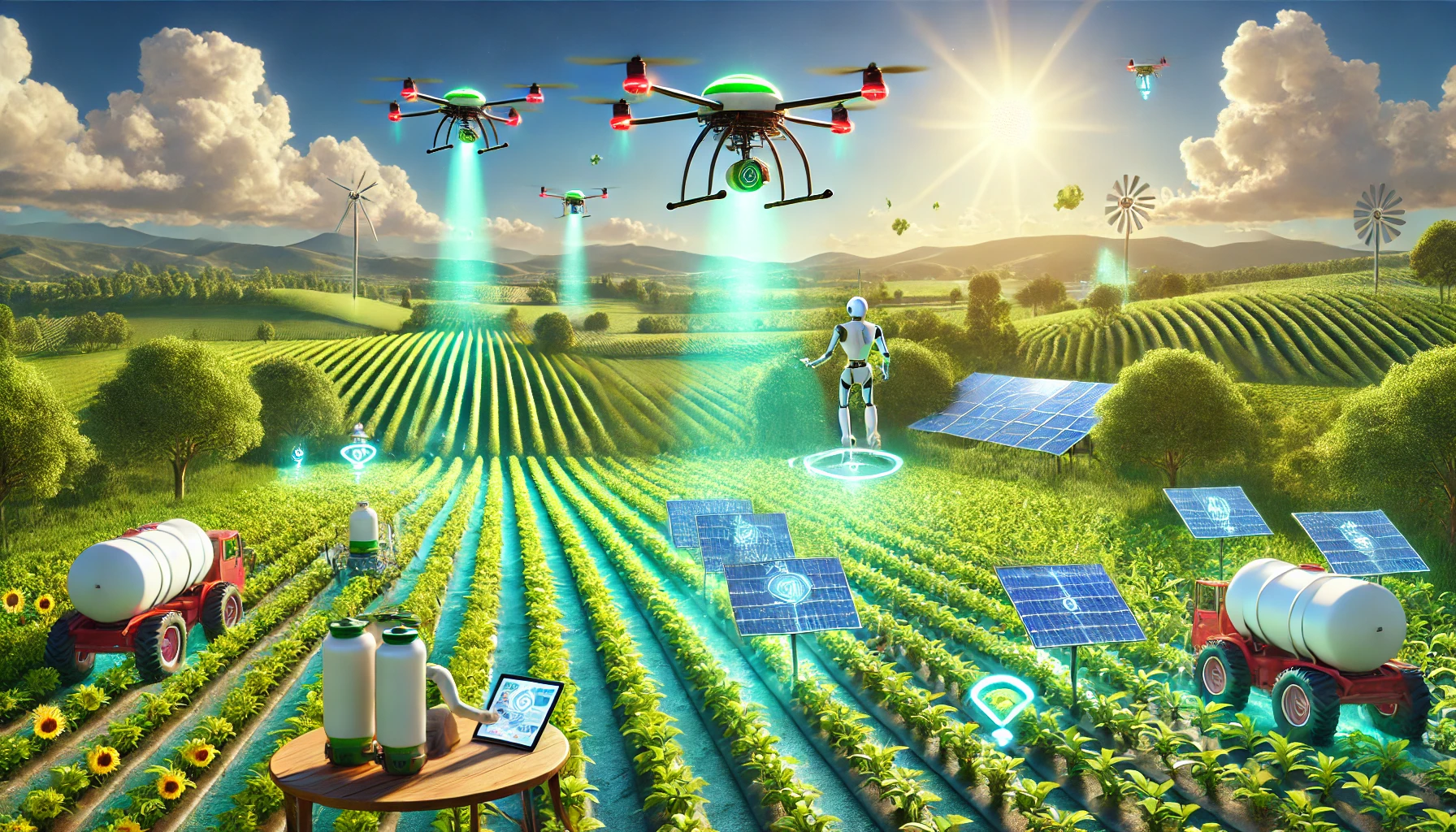How smart farming can reduce fertilizer & pesticide use
Agriculture, the backbone of global food production, has long been reliant on fertilizers and pesticides to keep crops healthy and productive. However, with rising environmental concerns, soil degradation, and the unpredictable effects of chemicals on ecosystems, there is a growing need for a smarter, more sustainable approach to farming. Enter the world of smart farming innovations—a technological revolution that promises to reduce our reliance on fertilizers and pesticides while ensuring that food production can keep pace with the world’s growing population.
Precision Agriculture: Tailoring Solutions to the Land
Here’s another way how smart farming can reduce fertilizer & pesticide use. One of the most powerful tools in modern farming is precision agriculture. At its core, this method uses data-driven insights and advanced technologies to optimize crop production. Rather than applying fertilizers and pesticides uniformly across an entire field, precision farming allows for more targeted interventions.
For example, by using soil sensors and drones, farmers can gather detailed information about soil health, moisture levels, and nutrient deficiencies in specific areas of a field. This allows them to apply fertilizers only where they are needed, reducing waste and minimizing the risk of runoff that can harm nearby water systems. By using just the right amount, farmers can boost yields without overloading the soil with synthetic chemicals, promoting healthier crops and reducing environmental impact.
Biological Pest Control: Nature’s Own Solution
Pesticides have long been the go-to solution for managing crop pests, but their widespread use has led to resistance and the destruction of beneficial insects. Smart farming innovations are changing this by introducing biological pest control methods, which harness the power of nature to keep pests in check without chemicals.
One such innovation is the use of biological sensors that detect the presence of harmful pests and identify the right predators to manage them. For example, farmers can introduce beneficial insects like ladybugs or parasitic wasps into the ecosystem, which target specific pests without harming crops. In some cases, automated drones can release these beneficial insects at precisely the right time, ensuring maximum effectiveness and eliminating the need for harmful pesticides.
Another innovative approach is the development of biocontrol agents, which are natural organisms like bacteria or fungi that target specific pests or diseases. These agents can be applied directly to crops, preventing pests from causing damage while being completely safe for the environment.
Data and Artificial Intelligence (Another means which can control How smart farming can reduce fertilizer & pesticide use)
Artificial intelligence (AI) and data analytics are also playing a pivotal role in reducing the need for fertilizers and pesticides. By using machine learning algorithms, farmers can predict pest outbreaks or nutrient deficiencies before they become a problem. AI-powered tools analyze vast amounts of data—such as weather patterns, soil health, and pest behavior—to help farmers make informed decisions on when and where to apply fertilizers or pest control.
For instance, AI can predict pest behavior patterns by analyzing historical data, allowing farmers to apply pest control treatments only when absolutely necessary. This proactive approach not only cuts down on pesticide use but also reduces the risk of pest resistance, which often arises from overuse of chemicals.
Vertical Farming and Controlled Environments: Growing Smarter, Not Harder
Urban farming is also embracing smart technologies to reduce dependence on traditional farming inputs. Vertical farming and controlled-environment agriculture (CEA) are revolutionizing how crops are grown by using advanced hydroponic or aeroponic systems. These systems allow crops to be grown without soil, using nutrient-rich water solutions instead. By carefully controlling the environment—temperature, light, humidity, and air quality—these systems can produce high yields without the need for chemical fertilizers or pesticides.
In vertical farms, sensors continuously monitor plant health and adjust the conditions to ensure optimal growth, reducing the need for chemical inputs. These methods also minimize the environmental footprint of farming, as they use far less water and can be implemented in urban areas, reducing the need for large-scale rural farming.
The Role of Biotechnology: Crops Designed to Thrive with Less
Another breakthrough innovation in reducing the need for fertilizers and pesticides comes from biotechnology. Genetically modified (GM) crops are being designed to be more resilient, allowing them to thrive in less-than-ideal conditions. For example, certain GM crops have been engineered to fix their own nitrogen, reducing the need for nitrogen-based fertilizers. Others have been developed to resist specific pests, meaning farmers don’t need to apply chemical pesticides at all.
While the debate over GM crops remains complex, these innovations are showing promise in creating crops that are less dependent on external chemical inputs, offering a sustainable alternative to traditional farming methods.
Sustainable Farming’s Bright Future
The innovations in smart farming are not just about reducing the use of fertilizers and pesticides; they are about building a more sustainable future for agriculture. By embracing technology and working in harmony with nature, farmers are finding new ways to boost yields, protect the environment, and reduce the harmful impact of traditional farming practices. As these innovations continue to evolve, the agricultural industry will be better equipped to face the challenges of climate change, population growth, and the increasing demand for food.
Please click the link below to read more compelling articles
The future of farming is not only smarter but also greener. With the power of technology, nature, and human ingenuity, we can reduce our reliance on harmful chemicals and build a more sustainable food system for generations to come.
